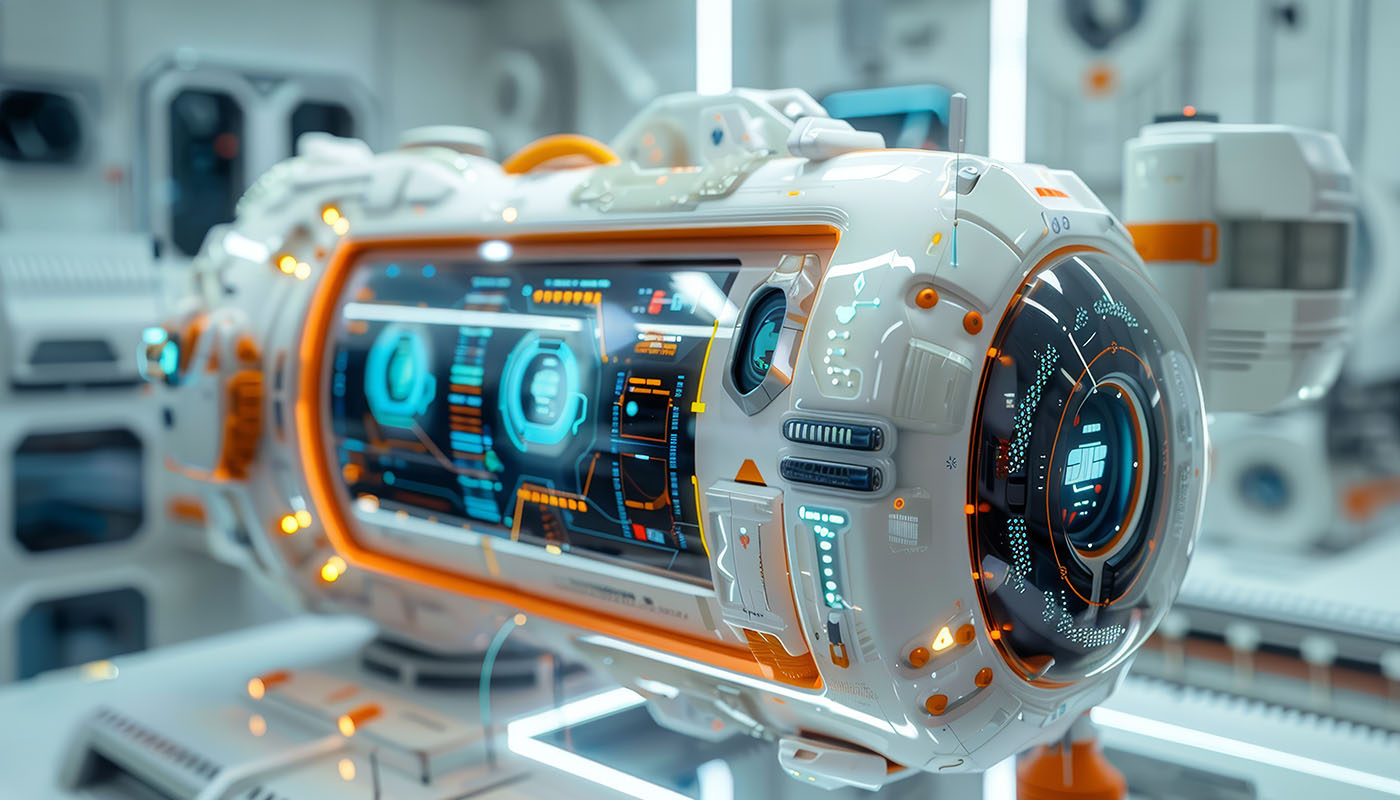
Data, intelligence and IP – the future of ICT
In many ways, information and communication technology (ICT) has been at the center of most human progress over the last six decades. The creation, distribution and utilization of data has consistently shaped our experiences and accelerated inventive endeavors.
As those ventures become increasingly digitized, the ICT solutions that enable them also grow more complicated. Software, systems and digital assets are expanding beyond the tech sector to become nearly ubiquitous, and as a result, the challenge of protecting their underlying innovations is actively reshaping Intellectual Property (IP) law.
In this regard, the International Patent Classification (IPC) provides a common thread to define these advancements, which fall primarily within Section G06, covering "Computing, Calculating and Counting Technologies," encapsulating software and hardware aspects of ICT. Telecommunications technologies, another vital component of ICT, are classified under Section H04, encompassing "Electric Communication Technique(s)." These classifications, G06 and H04, are crucial patent databases for defining the advancements in software, systems and digital communication.
Within the context of trademark protection for the ICT sector, class 42 of the Nice Classification system stands out as a critical category. Containing "Scientific and technology services and research; industrial analysis and research services; design and development of computer hardware and software," class 42 is instrumental in the legal safeguarding of innovative ICT products and services worldwide. The correlation between the IPC's definitions for patentable technologies and the scope of trademarks illustrates the robust structure set up to nurture and secure technological advancements.
To uncover how IP and ICT influence one another, our annual IP Trend Monitor survey asked experts to weigh in. Trends, patent nuances and the inescapable impact of artificial intelligence (AI) were all on the table — and the answers tell a valuable story about the future of ICT.
The balance of privacy and utility
There is no single technology, goal or process that defines ICT; instead, it is a vast and malleable sector, highly responsive to the demands of an increasingly globalized society. Nonetheless, it is possible to track ICT evolutions by way of patents — tangible markers of often intangible progress.
For example, patent applications for 5G and 6G more than tripled globally between 2000 and 2020, showing an accelerating pursuit of progress. However, the industry is also reactive to outside forces, not just internal ambition; hence, patent growth in this communications field temporarily fell in 2008 as a result of the global financial crisis.

Lockdowns during the COVID-19 pandemic massively increased our reliance on digital communications for both business activities and social interaction. Having a solid ICT infrastructure already in place was vital to the health of the public and economy.
Though economic pressures weigh on all other industries to a greater or lesser degree, the opposition between novelty and convention uniquely defines ICT growth, particularly where privacy laws are concerned. For instance, systems and methods for data processing (IPC class G06Q) and for transmitting digital information (IPC class H04L) are directly concerned with legislation such as:
- Act on the Protection of Personal Information (APPI) (Japan)
- California Consumer Privacy Act (CCPA) (United States)
- General Data Protection Regulation (GDPR) (European Union)
- Personal Information Protection Act (PIPA) (Republic of Korea)
Such laws are necessary to prevent the runaway exploitation of private information; hence, while patentability criteria require innovations to be novel, inventive (or non-obvious) and industrially applicable, data privacy focuses on determining what is secure and allowable under the law, emphasizing the protection of personal information against unauthorized access or disclosure. Some misalignment is inevitable, so it is fortunate that IP law offers a means to reconcile these conflicting goals, empowering inventors to integrate compliance directly into the foundation of technology through strategic patent drafting. This approach not only protects the inventive aspects of technology and products in general but also ensures that these innovations adhere to privacy and data protection standards from the outset.
Law firm respondents in our IP Trend Monitor survey agreed, with nearly half (47%) identifying the protection of user data and privacy as the primary goal of IP protection in the ICT sector. The proportion was somewhat lower among all respondents, totaling 33%. However, it was still the second-most important goal identified overall, pipped only by "safeguarding novel software algorithms and innovations" at 35%.
This indicates that experts still see IP law primarily as a protection mechanism rather than a tool for economic empowerment. It is the underlying motivation for protection that may differ. For example, only 24% of respondents said the primary goal of IP law in ICT was using "traditional" and standard-essential patents (SEPs) specifically to generate income.
Favoring the practical over the theoretical
When panelists were asked to rank the trends that will most influence IP strategies in this sector, AI and machine learning (ML) topped the list. Patent respondents ranked blockchain and distributed ledger technology as a secondary influence, while 5G and 6G technology filled this role for trademark specialists. That being the case, both these groups and respondents in C-suite / management positions expressed reduced interest in quantum computing. Such responses appear to show that the intersection of ICT with IP will be centered on the top technologies currently accessible.

In order to receive patent protection, an invention must have industrial applicability, meaning it needs to be achievable using current technological methods. Highly speculative ideas and theoretical concepts may fall outside of this requirement.
This leads to a simplified but useful understanding of the ICT sector through a patent lens. Although the inclinations toward what is new and what is familiar often pull in opposite directions, particularly where advanced technologies and stringent regulations are concerned, the clever application of patent protection helps draw them together within a tried-and-true framework.
Contextualizing data for the ICT industry
The study highlights evolving priorities within the ICT industry, beginning with a crucial shift toward accentuating cybersecurity in IP strategies. Meanwhile, the seemingly lower reliance on SEPs and other IP titles for income generation, indicated by just 12% of respondents, appears to suggest a broader diversification of protection strategies among the respondents.
Furthermore, AI and ML emerge as pivotal fields, with an overwhelming majority ranking these technologies as critical influences for future IP strategies. While this consensus reveals their status as hot topics within the ICT domain, their patentability at the European Patent Office (EPO) is nuanced. AI and ML are seen as mathematical methods, which are not patentable per se according to the EPO's guidelines. However, when applied to solve a technical problem or incorporated within a technical process, such innovations may qualify for patent protection. This distinction emphasizes the importance of demonstrating a tangible, technical application of these technologies for them to be considered under IP law.
One final area of interest is the emergence of Non-Fungible Tokens (NFTs), which introduce new dimensions to trademark law. NFTs, which certify the uniqueness and ownership of digital assets, meet trademark law when mirroring or incorporating trademarked material. This convergence raises complex legal questions about the use, duplication and ownership rights of trademarked content in the digital sphere.
These insights should prompt stakeholders in the ICT industry to reconsider IP strategies, emphasizing the protection of user data and adapting to these rapidly evolving technologies while also enhancing their understanding of less trending innovations, such as quantum computing. For policymakers, these findings underscore the need for harmonizing IP laws to address the nuances of digital innovations, ensuring they foster growth while protecting rights.
Making the virtual visible
IP, ICT and AI interact in complex ways, making these relationships easier to grasp in real-world contexts.
Technological obsolescence and patent law
In a world where everything from consumer preferences to new technological discoveries can render once-leading inventions outmoded, it is crucial to understand the factors determining an innovation's relative lifetime. A recent study has even used patent data as a measurement of technological obsolescence, relying on the change in citations over time to indicate the degradation or durability of an invention's relevance.

Tracking the number of citations a body of patents receives over time has been proposed as a measure of its foundational nature and continuing relevance. With this method, a company's self-citations are excluded to remove potential bias.
The problem is that back-and-forth patent jostling among competitors is built upon a paradox regarding the value of obsolescence. Is this replacement cycle good for innovation because it encourages constant improvements, or bad because it emphasizes short-term gains over long-term viability?
This phenomenon is perhaps most evident in the ICT sector, where Moore's Law has been a driving force since 1965. Originally articulated by Intel co-founder Gordon E. Moore, the principle observes that the number of transistors on a processor chip doubles approximately every two years, leading to exponentially faster computing speeds. This rapid advancement has significantly boosted communication technologies and even patentable software. However, this same rapid progression often outpaces the technologies it spawns, sometimes rendering them obsolete before their patent exclusivity period concludes.
Interestingly, while the end of Moore's Law might seem concerning, it presents a unique opportunity. According to Wirth's Law, as hardware accelerates, software tends to slow down because developers often favor adding new features over optimization. This results in software that is not only inefficient but also increasingly complex and heavy. For the past 50 years, this inefficiency has persisted. As a consequence, the ICT sector is both uniquely susceptible to obsolescence and uniquely poised to benefit from patents for cornerstone technologies. The trick, if there may be said to be one, is to identify in good time those inventions most likely to endure, producing daughter innovations and a proliferation of patent citations. Sorting these "next big things" from digital flashes in the pan is the difference between what Song Ma, author of the above study, terms low-obsolescence firms and high-obsolescence firms. Or, as he puts it another way, an annual stock-market performance gap of 7%.
The "singularity"
Once the stuff of science fiction, the concept that AI's faculties and evolution could supersede our own is now a very real consideration. This technology's ability to iterate for itself increasingly pushes human programming and training into redundancy, except for tasks such as complex decision-making, moral judgment or simulating extensive real-world physical interactions. While there are numerous arguments both for and against this scenario, the fact remains that if a technological singularity comes to fruition, patent law will likely be an enabler.
What comes next for ICT innovators?
With so many opposing pressures and new priorities, technologies and considerations, the future of ICT is actively being written. However, one thing is certain: Patents are simultaneously a driving force and a protective barrier, creating a sort of balance in a fast-moving sector.
There is always more to learn about IP's interaction with business. To get insights into other industries, download the full IP Trend Monitor study and see the companion articles in this series.
Filed in

Take an in-depth look at medical devices and how IP will foster, inform and protect more innovative healthcare experiences.



